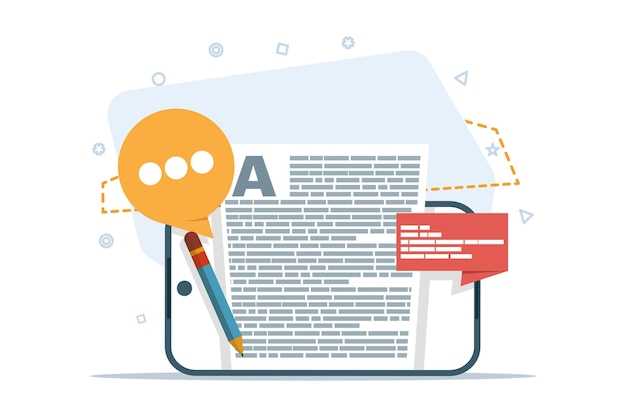
Start by identifying the main idea of your source material. Highlight key points that support the central argument or theme. This ensures your summary stays focused and concise.
Use your own words to rephrase the content. Avoid copying sentences directly, as this can lead to unintentional plagiarism. Instead, focus on capturing the essence of the original text.
Keep your summary brief–aim for one-third the length of the original. This forces you to prioritize the most important information and eliminate unnecessary details.
Organize your summary logically. Follow the structure of the original text, but condense it into clear, coherent paragraphs. This makes it easier for readers to follow your thoughts.
Practice regularly to improve your skills. Summarize articles, essays, or even book chapters to build confidence and refine your technique. Over time, you’ll notice a significant improvement in your ability to distill complex ideas.
For more advanced tips, consider working with a writing coach or joining a workshop. Personalized feedback can help you identify areas for improvement and accelerate your progress.
How to Identify Key Points in Your Source Material
Scan the text for headings, subheadings, and bolded phrases, as they often highlight main ideas. Focus on the first and last sentences of paragraphs, where authors typically introduce and summarize key points. Look for repeated terms or concepts, as they signal important themes.
Pay attention to statistics, quotes, or examples, as they often support central arguments. Use a highlighter or take notes to mark sections that stand out. If the material is lengthy, break it into smaller sections and summarize each part in a few sentences.
Ask yourself what the author’s main message is and how each detail contributes to it. Compare your notes with the original text to ensure accuracy. This approach helps you extract the most relevant information quickly and efficiently.
Structuring Your Summary for Maximum Clarity

Begin with a concise thesis statement that captures the core idea of your essay. This anchors your summary and gives readers a clear focus from the start. Use straightforward language to ensure your message is instantly understood.
Break your summary into three main parts: introduction, body, and conclusion. In the introduction, state the purpose and main argument. Use the body to highlight key points, supporting them with brief examples or evidence. Keep each point separate but logically connected to maintain flow.
Limit your summary to one-third the length of the original text. This forces you to prioritize essential details and avoid unnecessary elaboration. Use bullet points or numbered lists if it helps organize complex information more effectively.
End with a strong conclusion that reinforces the main idea without introducing new information. This leaves a lasting impression and ensures your summary feels complete and purposeful.
Revise your work to eliminate redundancy and ensure every sentence adds value. Reading your summary aloud can help identify awkward phrasing or unclear sections.
Techniques to Paraphrase Without Losing Meaning
Identify the core idea of the original sentence and restructure it using synonyms without altering the context. For example, “The study highlights the benefits of exercise” can become “Research emphasizes the advantages of physical activity.”
- Change the sentence structure by switching from active to passive voice. “The company launched a new product” becomes “A new product was launched by the company.”
- Use phrases or clauses to expand on ideas. Instead of “The meeting was productive,” try “The meeting resulted in several actionable decisions.”
- Replace specific words with broader or narrower terms. For instance, “The student achieved high grades” can transform into “The pupil scored excellent marks.”
Read the paraphrased sentence aloud to ensure it flows naturally and retains the original meaning. If it feels awkward or unclear, adjust the wording or structure.
- Break complex sentences into simpler ones. “Despite the challenges, the team completed the project on time” can be split into “The team faced challenges. However, they finished the project on schedule.”
- Use examples or analogies to clarify ideas. “Time management is crucial for success” can become “Managing time effectively, like organizing a schedule, helps achieve goals.”
- Incorporate transitions to link ideas smoothly. Instead of “The plan failed. The team tried again,” write “Although the plan failed, the team made another attempt.”
Test your paraphrased version by comparing it to the original. Ensure it conveys the same message without copying the wording or structure directly.
Polishing Your Summary for a Professional Finish
Read your summary aloud to catch awkward phrasing or unclear sentences. Hearing the text helps identify areas that need improvement.
Replace vague words with precise language. For example, swap “good” with “reliable” or “effective” depending on the context.
Check the flow by ensuring each sentence connects logically to the next. Use transitional phrases like “as a result” or “for instance” to maintain clarity.
Cut unnecessary repetition or redundancy. Aim to convey your message concisely without losing meaning.
Proofread for grammar and punctuation errors. Use tools like Grammarly or Hemingway Editor for additional support.
Ask a peer or mentor to review your work. Fresh eyes often spot issues you might overlook.
Format your summary consistently. Use bullet points for key ideas or bold text for emphasis, ensuring readability.